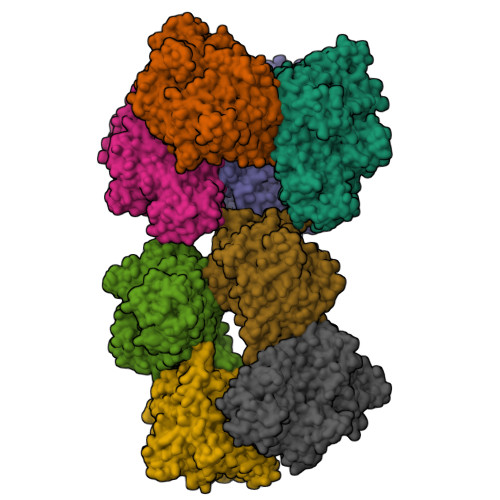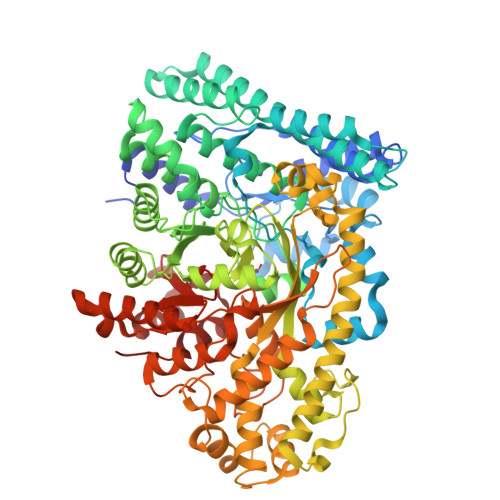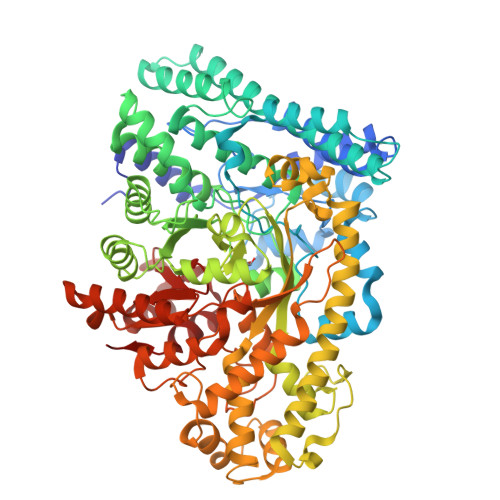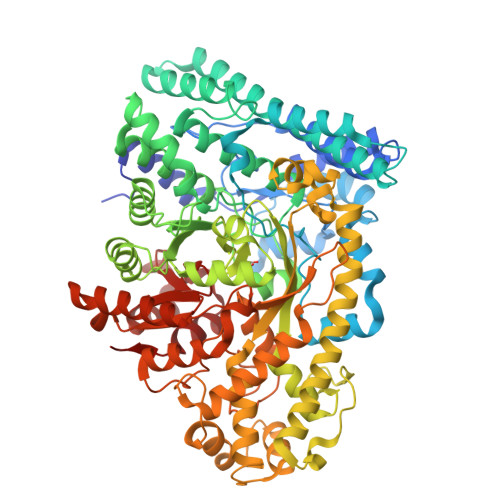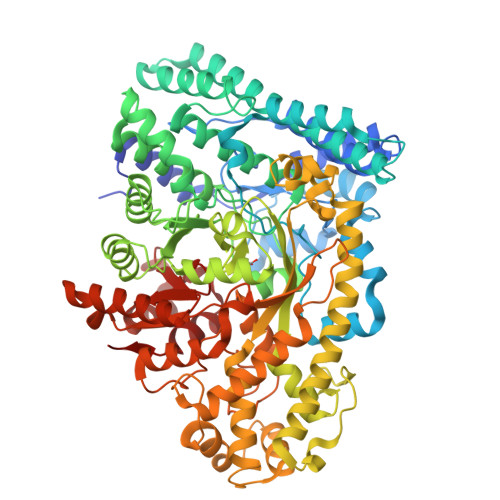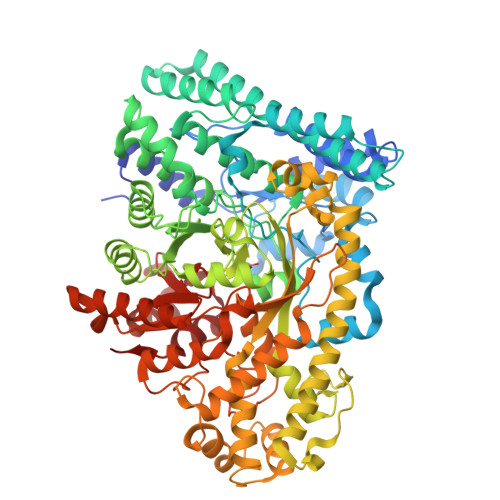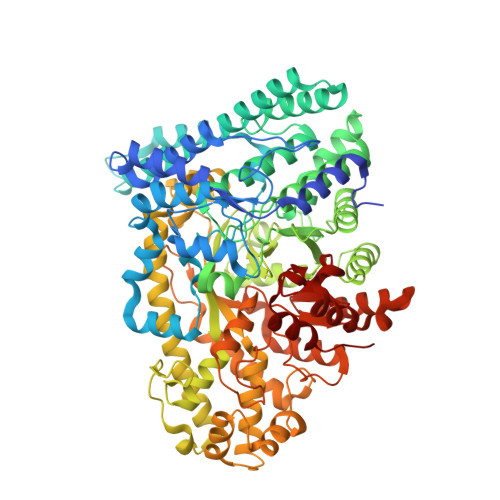Molecular basis for catabolism of the abundant metabolitetrans-4-hydroxy-L-proline by a microbial glycyl radical enzyme.
Backman, L.R., Huang, Y.Y., Andorfer, M.C., Gold, B., Raines, R.T., Balskus, E.P., Drennan, C.L.(2020) Elife 9
- PubMed: 32180548
- DOI: https://doi.org/10.7554/eLife.51420
- Primary Citation of Related Structures:
6VXC, 6VXE - PubMed Abstract:
The glycyl radical enzyme (GRE) superfamily utilizes a glycyl radical cofactor to catalyze difficult chemical reactions in a variety of anaerobic microbial metabolic pathways. Recently, a GRE, trans -4-hydroxy-L-proline (Hyp) dehydratase (HypD), was discovered that catalyzes the dehydration of Hyp to ( S )-Δ 1 -pyrroline-5-carboxylic acid (P5C). This enzyme is abundant in the human gut microbiome and also present in prominent bacterial pathogens. However, we lack an understanding of how HypD performs its unusual chemistry. Here, we have solved the crystal structure of HypD from the pathogen Clostridioides difficile with Hyp bound in the active site. Biochemical studies have led to the identification of key catalytic residues and have provided insight into the radical mechanism of Hyp dehydration.
Organizational Affiliation:
Department of Chemistry, Massachusetts Institute of Technology, Cambridge, United States.







